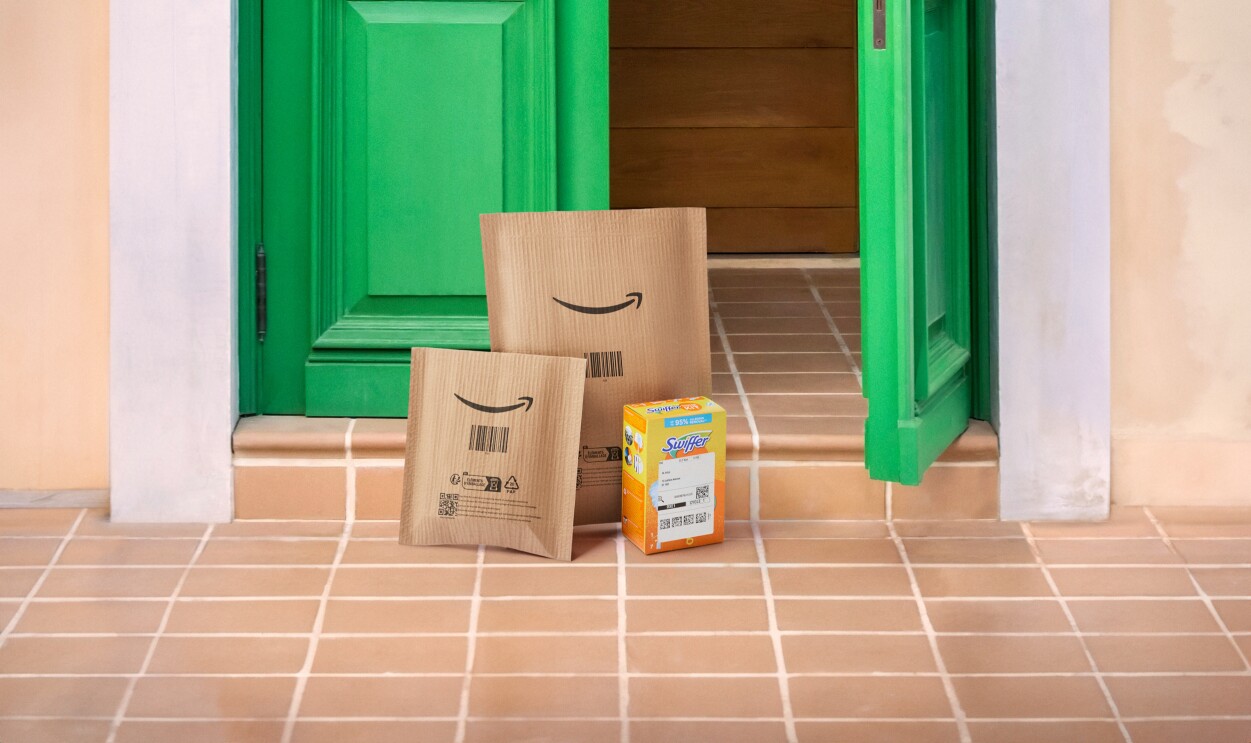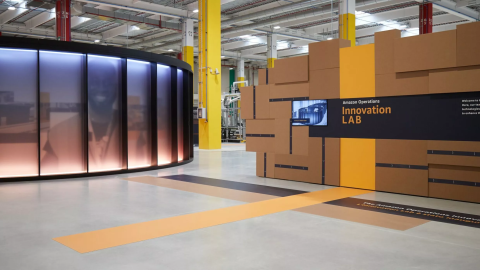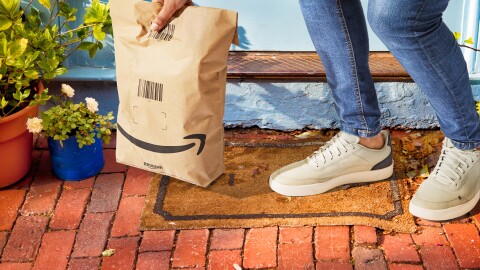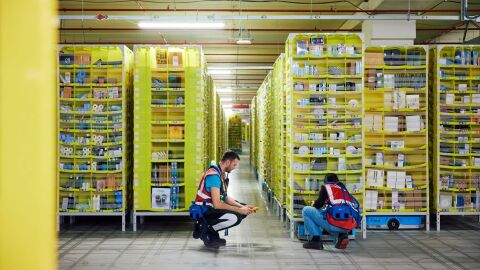Amazon is thinking outside the box: instead of our iconic corrugated box with a smile logo, more than 50% of European shipments now come in reduced, recyclable delivery packaging, such as a paper bag or cardboard envelope—or with no added packaging at all through Amazon’s Ships in Product Packaging programme.
Ships in Product Packaging is used for eligible items that don’t require any additional Amazon packaging at all—the products ship in the original manufacturer’s packaging, with only a customer address label added. In addition to waste reduction, no added packaging can also mean shipments are lighter, which leads to reduced delivery emissions per package, as well as less to recycle. More than 1 billion shipments in Europe have already been delivered without additional packaging in the past five years through this programme.
For items that need additional packaging, we use paper bags and card envelopes which are up to 90% lighter than similar-sized corrugated carboard boxes, require less packaging material, and result in less empty space in each package shipped.
“Customers know Amazon for our instantly recognisable cardboard delivery boxes, but more than half of our deliveries in Europe now come in lighter packaging such as paper bags or card envelopes, or with no added packaging at all,” said Pat Lindner, Amazon’s VP of Mechatronics and Sustainable Packaging. “We are committed to using machine learning and artificial intelligence to reduce packaging and be more sustainable for our customers, and the Operations Innovation Lab in Italy is at the forefront of those efforts.”

In February this year, we started offering incentives to third-party sellers enrolled in the Fulfilment by Amazon programme to re-engineer their packaging and certify their products under the Ships in Product Packaging programme.
Creating the lightest paper bags and envelopes
The Operations Innovation Lab is the place where we test the latest packaging technologies for Europe. It features dedicated equipment such as an automated machine that creates made-to-fit packaging, and an innovative labelling robot that automates label application for packages that can be shipped without added delivery packaging.
When additional Amazon packaging is required to ship a product, we use paper-based packaging that can be easily recycled in customers’ household recycling. In Europe, all of our delivery packaging—the boxes, bags and envelopes that we pack products in to deliver to our customers—is recyclable. This includes delivery packaging for items sold directly by Amazon, and by third-party selling partners that use Fulfilment by Amazon.
However, we also want to use as little packaging as possible to minimise our impact. Over the last several years, we have significantly reduced packaging by using Artificial intelligence (AI) and machine learning (ML) to identify products that can be safely delivered in lighter, smaller packaging. The Packaging Decision Engine is an AI model helping to determine the most efficient packaging options to ship millions of items available to our customers. Data scientists have trained the model to understand a variety of product attributes, including an item’s shape and durability, and to analyse customer feedback on how different packaging options have performed. The model is constantly learning and has helped reduce our packaging use.
We’re also testing a new recyclable paper-padded envelope across Europe. The envelope is made entirely from paper, optimised for weight, flexibility, and impact resistance. The paper padding inside the mailer provides the required protection to the products inside, absorbing the stress put on the package during its journey to reach the customer. It’s much lighter than cardboard envelopes and boxes, easier to fill without wasted space, and requires less carbon to manufacture and transport it. When packages are the right size, we can fit more of them in every van, leading to fewer van journeys, which in turn helps us with our goal to be net-zero carbon across our operations by 2040. Paper-padded envelopes can be disposed of in household recycling.

Automated made-to-measure packaging
We have developed new machines that create on-demand, recyclable, made-to-fit packages, reducing the volume of packaging for thousands of everyday items. Using an in-built sensor, the machines scan items such as video games, kitchen gadgets, sports equipment, and office supplies—each of which were previously sent in boxes and cardboard folders—and then cut the paper bag from rolls of paper in real time, in order to pack the items securely. Each bag is secured using heat-sealing technology, enabling the machines to pack quickly and accurately, while minimising empty space around the contents. No glue is needed to seal the packaging, which further reduces resource usage. By packing items in 100% recyclable light paper packaging, which is made-to-fit without the need for padding, the machines help to avoid more than 26 grams of packaging per shipment, on average.
Improving our labels
As we’re reducing our packaging and improving the recyclability of our packaging materials, we’re also investing in innovative labelling technologies. We’re testing a new Universal Robotic Labeller, a high-speed auto-labelling machine that improves label placement and adhesion on paper bags and products that ship in their own packaging. The new machine allows us to place labels automatically onto smaller sized and uniquely shaped packaging, reducing materials, lowering costs, and increasing speed and efficiency. We are also testing a new easy-peel label technology in Europe and the U.S. that allows customers to remove shipping labels from their Ships in Product Packaging boxes after delivery.
In 2022, 11% of all packages shipped globally were without added Amazon delivery packaging through our Ships in Product Packaging programme. Since 2015, we’ve reduced our per-shipment packaging weight by 43%, on average, representing more than 3 million metric tons of packaging materials avoided. Our teams are working every day to improve our packaging and transform our transportation network to make it more sustainable, including electrifying our delivery fleet and sourcing alternatives to fossil fuels.
Read our latest Sustainability Report here.












